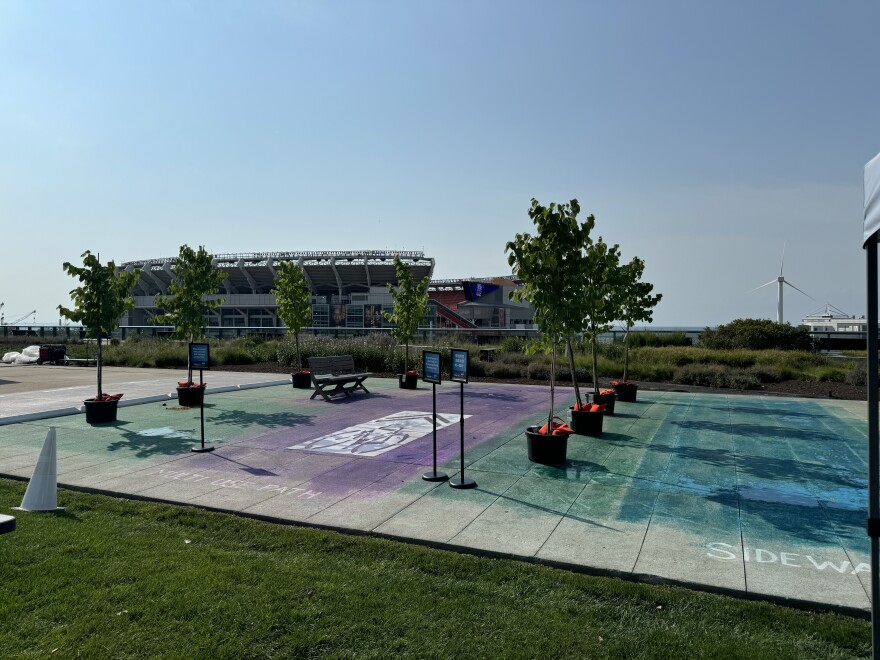Cleveland is moving forward with its revamp of Downtown’s lakefront and Shoreway — with or without the Browns' stadium.
Mayor Justin Bibb unveiled the design plans to residents at a public forum at Downtown's Mall C on Monday.
"This vision is about equity. This vision is about access, and this vision is about finally making sure we have a lakefront we can all be proud of," Bibb said.
The plans center around an infrastructure overhaul that includes a 120-foot-wide pedestrian land bridge that would connect Downtown to the North Coast Harbor — where the Browns stadium, Great Lakes Science Center and Rock and Roll Hall of Fame currently sit.
Additional plans include a new public beach, a hotel, retail and a redesign of the Shoreway freeway that currently cuts off most of Downtown from the lakefront.
Under the proposal, the city could also change traffic patterns along the Shoreway by reducing speed limits from 50 miles per hour to 35 miles per hour, as well as slashing the eight-lane freeway to four lanes with a median.

The city paid nearly $1 million to designers to draw up the plans after the project initially went over budget. A city spokesperson appeared to confirm at the time that those plans could account for a Downtown without the Browns after the team’s leadership expressed the possibility of moving to Brook Park — a sentiment Bibb doubled down on Monday evening.
"I want to make sure that we maintain this civic asset, maintain civic pride and keep the Browns in the great city of Cleveland, Ohio," Bibb said. "But regardless if the Browns stay or not, we will remake our lakefront once and for all."
Last week, Bibb presented a $461 million incentive package to keep the Browns at the city-owned stadium for another 30-year term. The team's current lease expires in 2028. He requested a response by next week but appears to be full steam ahead on his lakefront plans.
There have been many attempts to develop the lakefront over the decades, but Bibb vowed that his administration will bring his vision to the finish line.
"Probably every mayor since Tom Johnson [who was elected in 1901] has had a lakefront plan," Bibb said. "But over the last three years of my administration, we have been working very hard to make sure we see real shovels in the ground to transform our lakefront for the next 100 plus years."
He cited momentum for the project already, including financing options already passed by Cleveland City Council earlier this year. His Shore-to-Core-to-Shore tax increment finance district, which will funnel increases in property taxes in a geographic area Downtown to finance the lake and riverfront development plan, is expected to generate $3.5 billion to $7.5 billion in new revenue over the next 42 years.



